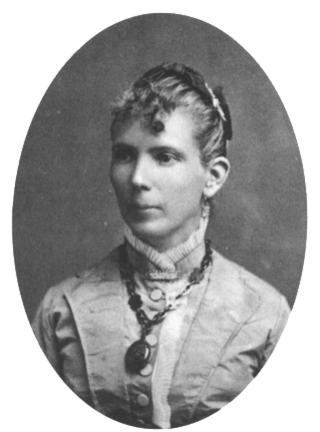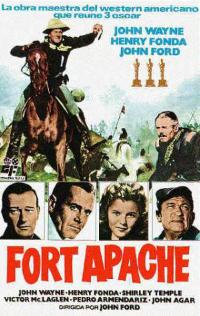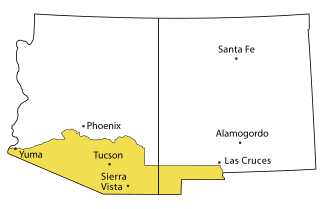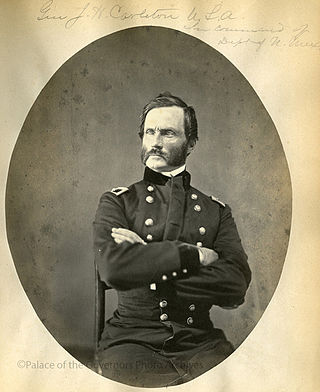
Christopher Houston Carson was an American frontiersman. He was a fur trapper, wilderness guide, Indian agent and U.S. Army officer. He became a fronter legend in his own lifetime through biographies and news articles; exaggerated versions of his exploits were the subject of dime novels. His understated nature belied confirmed reports of his fearlessness, combat skills, tenacity, as well as profound effect on the westward expansion of the United States. Although he was famous for much of his life, historians in later years have written that Kit Carson did not like, want, or even fully understand the fame that he experienced during his life.

Jeff Davis County is a county in the U.S. state of Texas. As of the 2020 census, its population was 1,996. Its county seat is Fort Davis. The county is named for Jefferson Davis, who served as the 23rd United States Secretary of War in the 1850s, and as Confederate president.

Gerónimo was a military leader and medicine man from the Bedonkohe band of the Ndendahe Apache people. From 1850 to 1886, Geronimo joined with members of three other Central Apache bands – the Tchihende, the Tsokanende and the Nednhi – to carry out numerous raids, as well as fight against Mexican and U.S. military campaigns in the northern Mexico states of Chihuahua and Sonora and in the southwestern American territories of New Mexico and Arizona.

Rio Grande is a 1950 American romantic Western film directed by John Ford and starring John Wayne and Maureen O'Hara. It is the third installment of Ford's "Cavalry Trilogy", following two RKO Pictures releases: Fort Apache (1948) and She Wore a Yellow Ribbon (1949). Wayne plays the lead in all three films, as Captain Kirby York in Fort Apache, then as Captain Nathan Brittles in She Wore a Yellow Ribbon, and finally as a promoted Lieutenant Colonel Kirby Yorke in Rio Grande. Rio Grande's supporting cast features Ben Johnson, Claude Jarman Jr., Harry Carey Jr., Chill Wills, J. Carrol Naish, Victor McLaglen, Grant Withers, the Western singing group the Sons of the Pioneers and Stan Jones.

Larcena Pennington Page, born Larcena Ann Pennington, was an American pioneer known for surviving a kidnapping by Apache as a young married woman of 23 years old in present-day Arizona. Left for dead and unable to stand, she crawled 15 miles (24 km) over the next sixteen days to reach safety.

Mescalero or Mescalero Apache is an Apache tribe of Southern Athabaskan–speaking Native Americans. The tribe is federally recognized as the Mescalero Apache Tribe of the Mescalero Apache Reservation, located in south-central New Mexico.

The Apache Wars were a series of armed conflicts between the United States Army and various Apache tribal confederations fought in the southwest between 1849 and 1886, though minor hostilities continued until as late as 1924. After the Mexican–American War in 1846, the United States annexed conflicted territory from Mexico which was the home of both settlers and Apache tribes. Conflicts continued as white colonizers came into traditional Apache lands to raise livestock and crops and to mine minerals.

Fort Sill is a United States Army post north of Lawton, Oklahoma, about 85 miles (137 km) southwest of Oklahoma City. It covers almost 94,000 acres (38,000 ha).

Fort Davis National Historic Site is a United States National Historic Site located in the unincorporated community of Fort Davis, Jeff Davis County, Texas. Located within the Davis Mountains of West Texas, the historic site was established in 1961 to protect one of the best remaining examples of a United States Army fort in the southwestern United States.

Fort Apache is a 1948 American Western film directed by John Ford and starring John Wayne and Henry Fonda. The film was the first of the director's "Cavalry Trilogy" and was followed by She Wore a Yellow Ribbon (1949) and Rio Grande (1950), both also starring Wayne. The screenplay was inspired by James Warner Bellah's short story "Massacre" (1947). The historical sources for "Massacre" have been attributed both to George Armstrong Custer and the Battle of Little Bighorn and to the Fetterman Fight.

Emmet Crawford was an American soldier who rose through the ranks to become an officer. He was most noted for his time spent in the Arizona Territory under General George Crook in the United States Cavalry. He was killed in pursuit of the Apache leader Geronimo in January 1886 in Mexico.

Mary Draper Ingles, also known in records as Mary Inglis or Mary English, was an American pioneer and early settler of western Virginia. In the summer of 1755, she and her two young sons were among several captives taken by Shawnee after the Draper's Meadow Massacre during the French and Indian War. They were taken to Lower Shawneetown at the Ohio and Scioto rivers. Ingles escaped with another woman after two and a half months and trekked 500 to 600 miles, crossing numerous rivers, creeks, and the Appalachian Mountains to return home.
Vivia Thomas is an American folk figure.

Florence Bates was an American film and stage character actress who often played grande dame characters in supporting roles.

Jolene Brand is an American actress. She acted most in the 1950s and 1960s, and appeared in seven episodes of the Ernie Kovacs television shows.

Prior to the adoption of its name for a U.S. state, Arizona was traditionally defined as the region south of the Gila River to the present-day Mexican border, and between the Colorado River and the Rio Grande. It encompasses present-day Southern Arizona and the New Mexico Bootheel plus adjacent parts of Southwestern New Mexico. This area was transferred from Mexico to the United States in the Gadsden Purchase of 1853. Mining and ranching were the primary occupations of traditional Arizona's inhabitants, though growing citrus fruits had long been occurring in Tucson.

Emily D. West (c.1815–1891), also known as Emily Morgan, is a folk heroine whose legendary activities during the Texas Revolution have come to be identified with the song "The Yellow Rose of Texas".

Colonel Royal Emerson Whitman, was an American army officer who served in the Civil War, Reconstruction and the Indian wars, best known for his association with the 1871 Camp Grant massacre. He was the father of noted orthopedic surgeon Royal Whitman.

The Crawford affair was a battle fought between Mexico and the United States in January 1886 during the Geronimo Campaign. Captain Emmet Crawford was commanding a company of Apache scouts, sixty miles southeast of Nacori Chico in Sonora, when his camp was attacked by Mexican Army militiamen. In the action, Crawford was shot and later died; his death nearly started a war between the United States and Mexico.

James Henry Carleton was an officer in the US Army and a Union general during the American Civil War. Carleton is best known as an Indian fighter in the Southwestern United States.




















